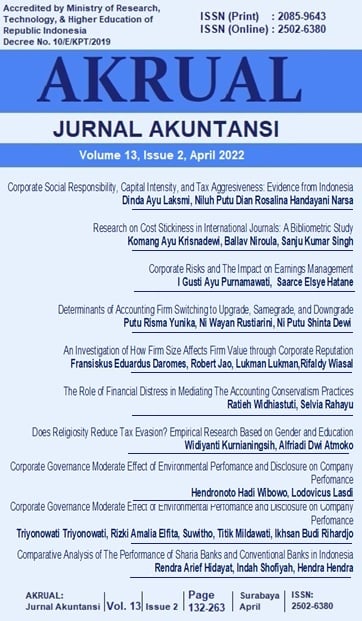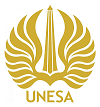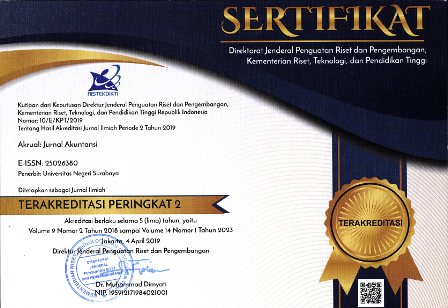Comparative Analysis of The Performance of Sharia Banks and Conventional Banks in Indonesia
DOI:
https://doi.org/10.26740/jaj.v13n2.p251-263Keywords:
Asset Quality, Conventional Bank, Efficiency, Sharia banks, StabilityAbstract
This paper examines the comparative performance of sharia banks and conventional banks for the period 2010-2020. The financial performance itself is seen from 3 aspects, namely efficiency, asset quality, and stability. Based on previous empirical research, the indicators used to measure efficiency are BOPO, asset quality with NPF (sharia banks) and NPL (conventional banks), and stability with Z scores. This research was conducted at sharia banks and conventional banks in the period 2010-2020 and used secondary data. The sample used was selected by purposive sampling. The data used in this study were obtained from financial statements collected and published through the Otoritas Jasa Keuangan (OJK) website www.ojk.go.id, the Osiris database, and the website of each bank that was used as a research sample and tested using two different statistical techniques average (independent sample test). The results of this study indicate that the rapid development of sharia banks compared to conventional banks in the post-crisis period was followed by the consistency of performance (better than conventional banks) as shown in the crisis period
References
Beachy, B. (2012). A financial crisis manual causes, consequences, and lessons of the financial crisis. Global Development and Environment Institute.
Cihak, M., & Heiko, H. (2008). Sharia banks and Financial Stability:An Empirical Analysis, IMF Working paper.
Hasan, M., & Dridi, J. (2010). The effects of the global crisis on Islamic and conventional banks: A comparative study, IMF WP 10/201.
Hassan, A., & Syafri Harahap, S. (2010). Exploring corporate social responsibility disclosure: the case of Sharia banks. International Journal of Islamic and Middle Eastern Finance and Management, 3(3), 2010.
Kara, M. (2012). Konstribusi Pembiayaan Perbankan Syariah Terhadap Pengembangan Usaha Mikro, Kecil, Dan Menengah. AHKAM: Jurnal Ilmu Syariah, 13(2).
Keuangan, O. J. (2021). Laporan Publikasi Bank Umum Konvensional. Retrieved June 12, 2021, from OJK website: https://www.ojk.go.id/id/kanal/perbankan/data-dan-statistik/laporan-keuangan-perbankan/Default.aspx#
Krugman, P. (1979). A Model of Balance of Payment Crises. Journal Of Money, Credit and Banking, 11.
Mohammad, M. O., & Shahwan, S. (2013). The objective of Islamic economic and Islamic banking in light of Maqasid Al-Shariah: A critical review. Middle-East Journal of Scientific Research, 13(13), 75-84.
Nugroho, L., Utami, W., Akbar, T., & Arafah, W. (2017). The challenges of microfinance institutions in empowering micro and small entrepreneur to implementating green activity. International Journal of Energy Economics and Policy, 7(3), 66-73.
Rahman, A. R. A. (2003). Ethics in accounting education: contribution of the Islamic principle of Maslahah. International Journal of Economics, Management and Accounting, 11(1).
Rosman, R., Wahab, N. A., & Zainol, Z. (2014). Efficiency of Sharia banks during the financial crisis: An analysis of Middle Eastern and Asian countries. Pacific-Basin Finance Journal, 28, 76-90.
Sobhani, F. A., Amran, A., & Zainuddin, Y. (2012). Sustainability disclosure in annual reports and websites: a study of the banking industry in Bangladesh. Journal of Cleaner Production, 23(1), 75-85.
Umardani, D., & Muchlish, A. (2016). Analisis Perbandingan Kinerja Keuangan Bank Syariah dan Bank Konvensional di Indonesia. Jurnal Manajemen Dan Pemasaran, 9(1).
Wibowo, E. S., & Syaichu, M. (2013). Analisis Pengaruh Suku Bunga, Inflasi, CAR, BOPO, NPF Terhadap Profitabilitas Bank Syariah (Studi Kasus pada Bank Mega Syariah, Bank Muamalat dan Bank Syariah Mandiri Periode Tahun 2008-2011).
Zaher, T. S., & Kabir Hassan, M. (2001). A comparative literature survey of Islamic finance and banking. Financial Markets, Institutions & Instruments, 10(4), 155-199.
Downloads
Published
How to Cite
Issue
Section
License
Copyright (c) 2022 AKRUAL: Jurnal Akuntansi

This work is licensed under a Creative Commons Attribution-NonCommercial 4.0 International License.
 Abstract views: 826
,
Abstract views: 826
, PDF Downloads: 866
PDF Downloads: 866


















